I love all natural lemony scents and flavours. I love lemons, and have many lemon trees of the cultivated and bush varieties, never wanting to be without lemon juice or peel in the kitchen.
But I also have two native trees with lemon-scented leaves.
This little beauty is the Lemon Myrtle (Backhousia citriodora), and I pick and dry its leaves to add whole to my teas.
On the tree, you have to crush a leaf to get the perfume. The beautiful starry clusters of flowers are a bonus I hadn’t expected from this Queensland rainforest tree.
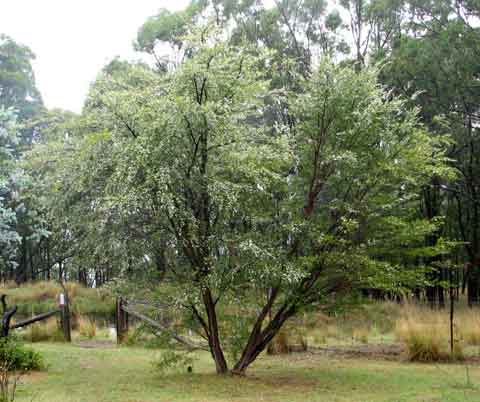
The other is a Lemon Scented Ti-Tree or Tea Tree (Leptospermum petersonii). It too can be used to make tea, although I haven’t. It’s grown into a lovely spreading shape, and the slightest brush against the leaves does release a strong lemon scent.
From a distance — like the house — the simple white flowers seem to dust the tree with light snow.
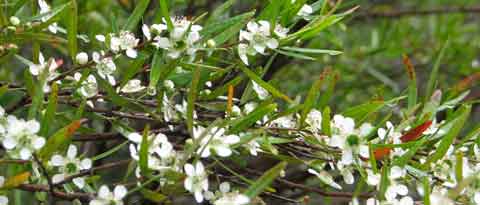
This one has a history: it seeded itself into a pot of aloe vera I had sat beneath the only tree in the tiny back yard of an inner-Sydney semi I was renting.
I love chance seedings — and freebies!
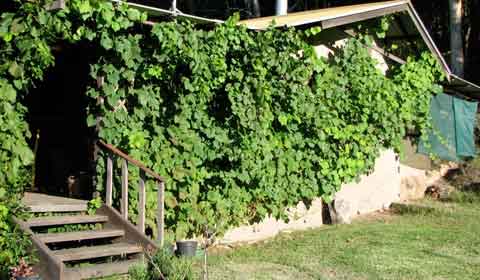 Each year the Crimson Glory Vine powers up from its woody trunk and heavily pruned short stems — and goes crazy along my western wall. I am amazed anew at its vigour.
Each year the Crimson Glory Vine powers up from its woody trunk and heavily pruned short stems — and goes crazy along my western wall. I am amazed anew at its vigour. 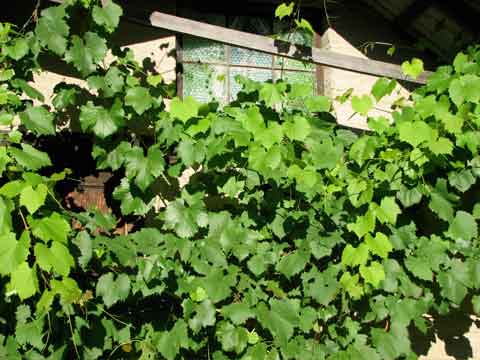 On the main western wall the greenery brings shade to the unused door and the upper fixed window; there is a leadlight window to the right of the door, but so densely shaded that it is invisible.
On the main western wall the greenery brings shade to the unused door and the upper fixed window; there is a leadlight window to the right of the door, but so densely shaded that it is invisible. 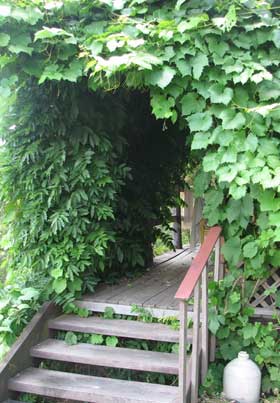 In Autumn the ornamental grape and wisteria vines on my verandah were a visual treat — a rich riot of warm colours.
In Autumn the ornamental grape and wisteria vines on my verandah were a visual treat — a rich riot of warm colours.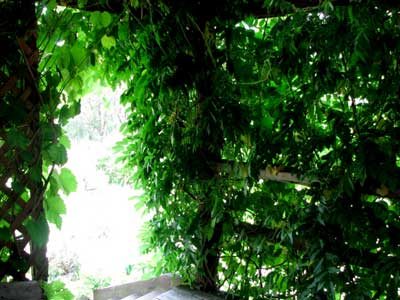
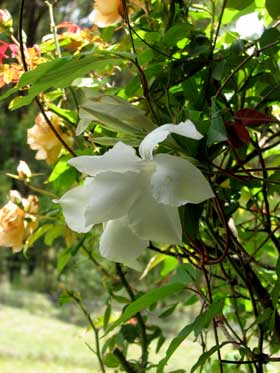 ‘Pray enter a refuge from the glare and heat of summer’, say my front steps, leading to a doorway in the vines.
‘Pray enter a refuge from the glare and heat of summer’, say my front steps, leading to a doorway in the vines.